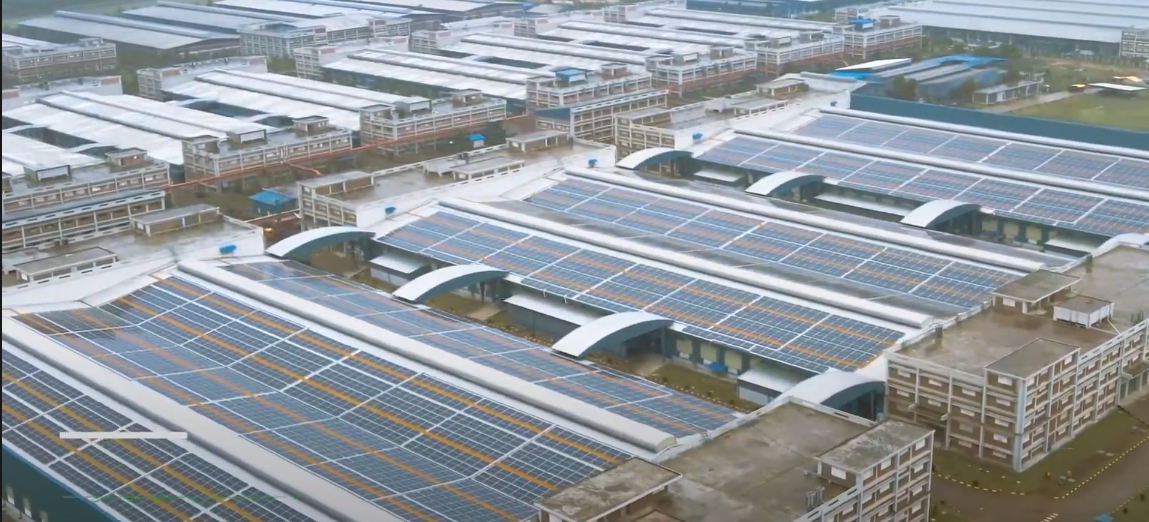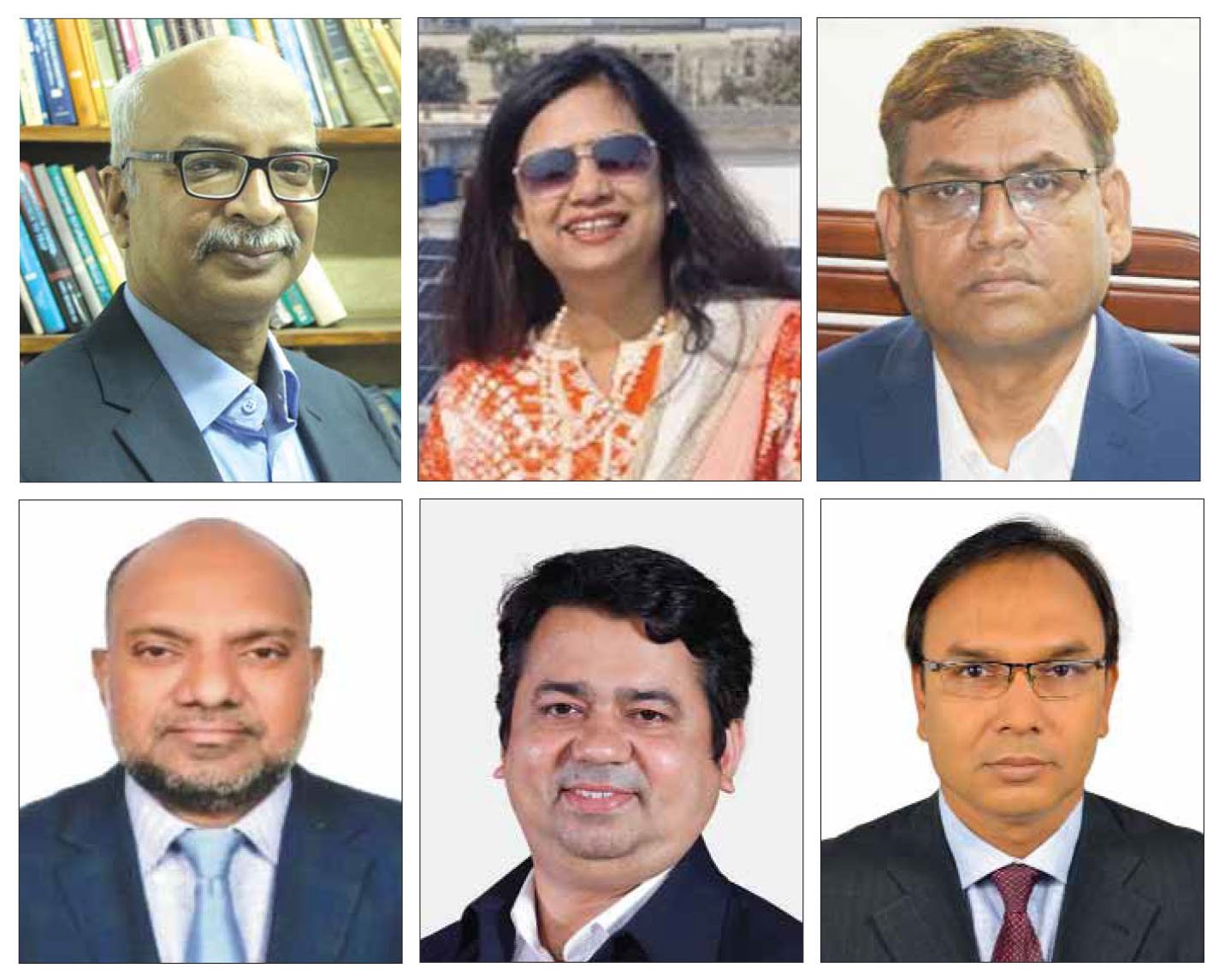
Bangladesh Rural Electrification Board (REB) can minimize its losses by adopting a household rooftop solar model in areas where there are fewer industrial electricity connections, experts said.
“Out of 80 Palli Bidyut Samity, only 13 are profitable in the areas where industrial connections are more. However, the authority can adopt rooftop or other solar-based models to reduce the cost of operations and minimize the loss of public funds,” M Tamim, vice-chancellor at the Independent University of Bangladesh (IUB) told a recent discussion.
Energy & Power magazine organized a discussion titled ‘Rooftop Solar: Investment and Policy Support for Industries’ over a virtual platform recently.
Prof M Tamim was the chief guest while Solaric Director Naznin Akhter made a keynote presentation on the challenges and opportunities of rooftop solar systems. Energy & Power Editor Mollah Amzad Hossain moderated the discussion.
Addressing the session, M Tamim urged the authorities to move with renewable energy by developing specific guidelines for rooftop solar systems.
“There is a challenge of real-time demand forecasting. Power system management would become difficult in case of any forecasting error. In Germany, the authorities are confused about connecting renewables to the grid. When a huge number of solar panels are connected to the grid and demand drops, the distributor will backtrack from the system operator. In California of USA, we find such example,” he said.
In the keynote, Engineer Naznin mentioned solar energy represented around 79.7 percent of 1,449 megawatts of power generation from renewable sources.

“There has been no significant growth in solar trends in the last two years. The grid-connected utility-scale consumption will be 993 megawatts and 112 megawatts on rooftops by the end of December 2024. So, around 1105 megawatts of utility come from renewable. Solar is yet a promising sector where there is a space to push the growth,” she said.
The Solaric official made the urgency of a positive business case to fetch more investment from local and foreign ventures.
“Solaric has been operating an IDCOL-funded project for the last six years. There is no example of default for a single month. There is a responsibility of SREDA to set a definition of a standard by setting a benchmark of quality,”
Engineer Naznin has made the urgency of a clear guideline for finance to solar projects to show the way for local and foreign investors to gain a return on investment.
“We are saying that 4.8-gigawatt electricity generation can be possible through rooftops that should be portrayed from different sectors to tap the opportunities. Then the investors will get a comfort zone to raise funds,” she said.
There is a lack of skilled workforce in management and workforce in renewable energy sector which can be addressed through setting up an independent institute for training and capacity building, according to the practitioner.
“As a business entity, we think about investing in human resources. If we only train people and then they leave the office, the ultimate loser is the entity. So, a body can be developed to upskill workforce for the sector,” she said.
She further mentioned that there are complexities in importing raw materials for renewable energy and rooftop solar projects.
“There should be a clear definition and benefits for the investors in rooftop solar as they invest in the OPEX model. Besides, the authorities can fix a rate of electricity purchase annually considering both sides in the business,”
The keynote speaker further mentioned that the electricity producer should be given space to connect 100 percent generation to the grid to make the business viable. “There should not be any capacity burn,” she added.
The industry insiders suggested making space for industrial rooftop investors to turn the project into an independent power producer to promote the sector.
SREDA Director Engineer Mozibur Rahman said that the authority is now working on two policies on renewable energy and net metering guidelines.
The embargo of 70 percent generation to the grid is withdrawn in the new net-metering guideline. Besides, if the production is higher than demand, the company can sell the electricity at the same rate, he said.
The net metering guideline is almost prepared as SREDA has conducted a high-level policy meeting recently where the policy was discussed, according to the SREDA official. “There are some minor observations at utility level which have been addressed in the process,” he said.
The SREDA official agreed on the adoption of technology to support storage systems in power generation from solar panels.
“There was a small project of the government to generate 2 megawatts per hour. The project is not completed due to a minor error. The synchronization between storage and grid is in process. The technical issue will be addressed soon,” he added.
Enamul Karim Pavel, head of renewable energy at IDCOL, said that the government wants to increase private sector involvement in renewable energy.
“We have been encouraging the private sector to invest in the OPEX model. The public-private partnership will enable entities to better maintain the panels. Banks and financial institutions can contribute here. There is a big chance to make a jump from here. We can reduce dependence on fossil fuel by promoting solar electricity generation,” he said.
Bangladesh Sustainable and Renewable Energy Association (BSREA) President Mostafa Al Mahmud said that solar energy or renewable sources can contribute to the economy by saving foreign currency spent to import fossil fuel or coals.
“We also pay huge subsidies in the power and energy sector apart from import-based energy consumption. If we can adopt renewable energy, the inflationary pressure can be softened gradually,” he said.
Mahmud appreciated the point of keynote speaker Engineer Naznin who mentioned 4.8 gigawatt opportunities in the rooftop solar sector.
“Rooftop has full potential to grow. We need roofs. When we meet with different stakeholders, we urge the infrastructure owner to allocate rooftops to set up panels. Then IDCOL can connect the bank with us to run the business and grow together. If we can increase the number of rooftops, the energy crisis will be addressed gradually,” said the BSREA chief.
The BSREA president also urged SREDA to provide a unique document through the ministry for OPEX model investment for faster growth of the rooftop solar sector.
BSREA has been involved in policy advocacy since 2010, however, there has been no significant progress in expansion of the renewable energy over the period.
“We have two points for the policymakers. The first is policy support to drive business and the other is easing access to finance to support new investment,” he added.
Mohammad Alauddin, rector at Bangladesh Power Management Institute, shared a challenge in roof-top solar that the system won’t work with an off-line grid.
“Recently, I learned about a new technology of hybrid inverter. The inverter can store power when the grid goes offline. There is no option for a stand-alone battery. We are planning to incorporate some new points including an incentive to inspire investors in the solar grid which comes into order soon,” he said.
Power generation companies should be brought under a regulation to inspire them to generate a minimum of 1.0 percent from renewable sources including solar, according to Alauddin, former chairman of SREDA.
Download EP Special As PDF/userfiles/EP_22_15_EP Special.pdf



